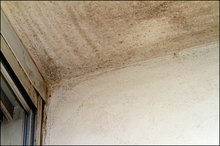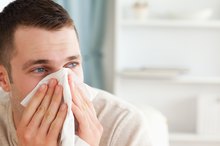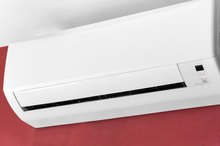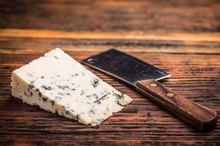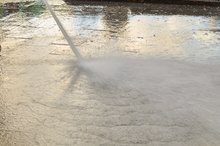What does fact checked mean?
At Healthfully, we strive to deliver objective content that is accurate and up-to-date. Our team periodically reviews articles in order to ensure content quality. The sources cited below consist of evidence from peer-reviewed journals, prominent medical organizations, academic associations, and government data.
The information contained on this site is for informational purposes only, and should not be used as a substitute for the advice of a professional health care provider. Please check with the appropriate physician regarding health questions and concerns. Although we strive to deliver accurate and up-to-date information, no guarantee to that effect is made.
How to Make a Mold Test Kit
Mold can seriously affect human health. The quantity of mold, type of mold present and individual susceptibility are all factors related to the level or degree of health risk. Mold-test kits are available that determine the presence of mold and identify what type of mold is present. You can make a mold test kit yourself using a few simple items.
If you are experiencing serious medical symptoms, seek emergency treatment immediately.
How to Make a Mold Test Kit
Place the petri dish on a flat surface. Put clear tape inside the dish, with the sticky side up. Place enough tape to span across the dish. The tape will catch any mold spores in air. Mold releases spores as a way of migrating. When the spores come into contact with water or moisture, they are able to form new mold colonies.
How to Get Rid of Mold & Fungus in Your Home
Learn More
Place a second petri dish in the air duct above the return air vent. Make sure the inside is lined with tape just like the previous step. Any mold spores traveling inside the ventilation systems will pass over the dish and cling to the tape.
Perform an analysis. After allowing the petri dishes to sit overnight, place them under a microscope. If you know what mold looks like, you can identify its presence in the air. Dust particles are likely to show up in the petri dish also, so be certain not to confuse the two. If you cannot or prefer not to do a technical analysis, there are companies you can send collected air samples to. They will perform the analysis and provide information on mold presence and type.
Physical Symptoms of Mold Illness
Learn More
Perform a visual inspection. Many mold test kits will ask you to take a sample of the suspected surface mold with a swap. This is so the mold can be identified for any toxic types like Stachybotrys and Aspergillus-Niger. It also will determine if the sample is a mold or a mildew, which are often confused since both molds and mildew prefer warm and moist environments like bathrooms. Molds, however, typically are black, green, red or blue in color. They can also appear fuzzy or slimy depending on the type. Mildew is usually gray or white and can be powdery or downy. A simple visual inspection should indicate whether the surface fungi is a mold or mildew.
Follow the CDC recommendation on testing. The degree and type of mold growth and individual susceptibility make it impossible to determine acceptable levels. This is why the Centers for Disease Control (CDC) state that sampling and culturing are not reliable methods of determining health risk. Testing may be subjective and the CDC recommends any mold discovered should be removed immediately to minimize health risk 12.
Warnings
Having a laboratory perform a mold test for you can be quite expensive.
- Place the petri dish on a flat surface.
- Put clear tape inside the dish, with the sticky side up.
- Dust particles are likely to show up in the petri dish also, so be certain not to confuse the two.
Related Articles
References
- CDC Mold Facts
- Mold Check - Mold Testing
- Amirhosein Ghaffarianhoseini, Husam AlWaer, Hossein Omrany, Ali Ghaffarianhoseini, Chaham Alalouch, Derek Clements-Croome & John Tookey (2018) Sick building syndrome: are we doing enough?. Architectural Science Review,61:3, 99-121.
- American College of Allergy, Asthma & Immunology. Mold Allergy. Reviewed April 23, 2018.
- Centers for Disease Control and Prevention. Fungal Diseases. Reviewed May 6, 2019.
- Centers for Disease Control and Prevention. Mold. Basic Facts. Reviewed December 20, 2017
- Asthma and Allergy Foundation of America. Mold Allergy. Reviewed October 2015.
- Centers for Disease Control and Prevention. Molds in the Environment. Rreviewed December 20, 2017.
- Asthma and Allergy Foundation of America, Mold Allergy
- Centers for Disease Control and Prevention (CDC), Mold, Basic Facts
- Rudert A, Portnoy J.Mold allergy: is it real and what do we do about it?Expert Rev Clin Immunol. 2017 Aug;13(8):823-835. doi: 10.1080/1744666X.2017.1324298. Epub 2017 May 17.
Warnings
- Having a laboratory perform a mold test for you can be quite expensive.
Writer Bio
Based in Florida, Jim Franklin started writing professionally in 2009. His articles appear on websites such as eHow, where he covers topics ranging from home improvement to finance. Franklin has a Bachelor of Arts in business management from Florida Atlantic University.
